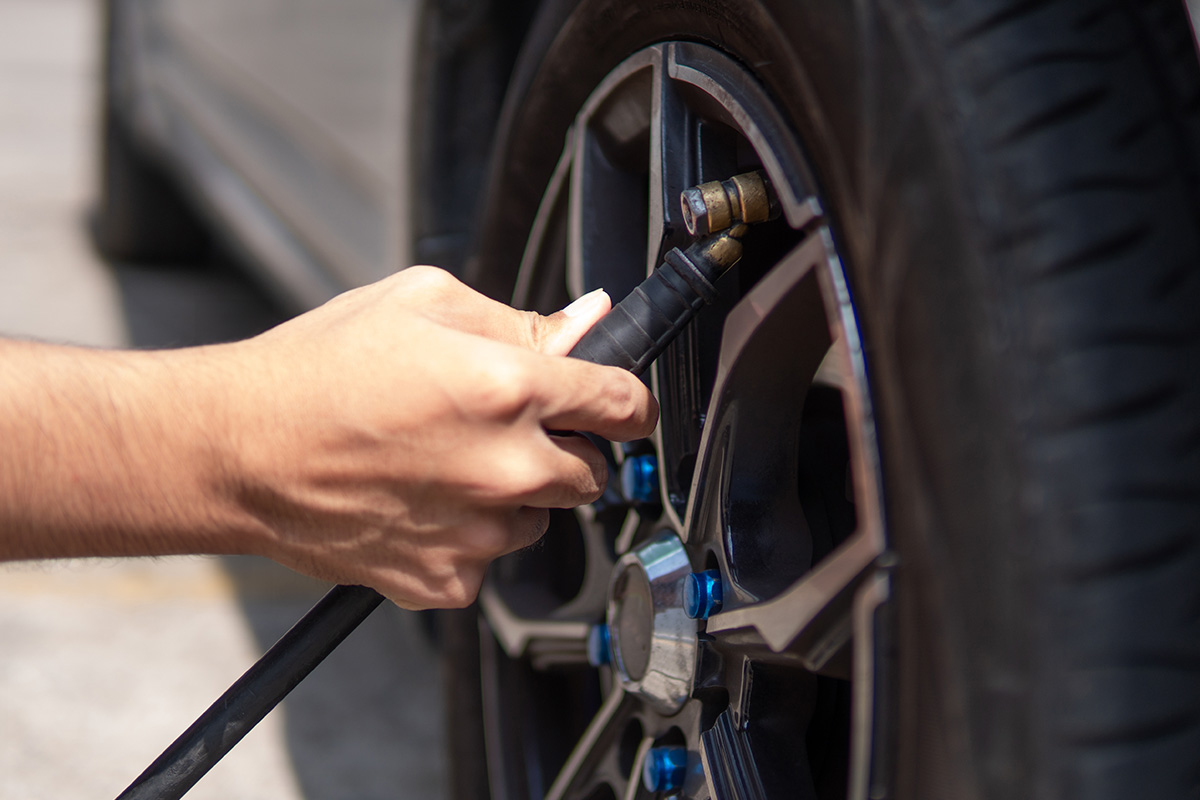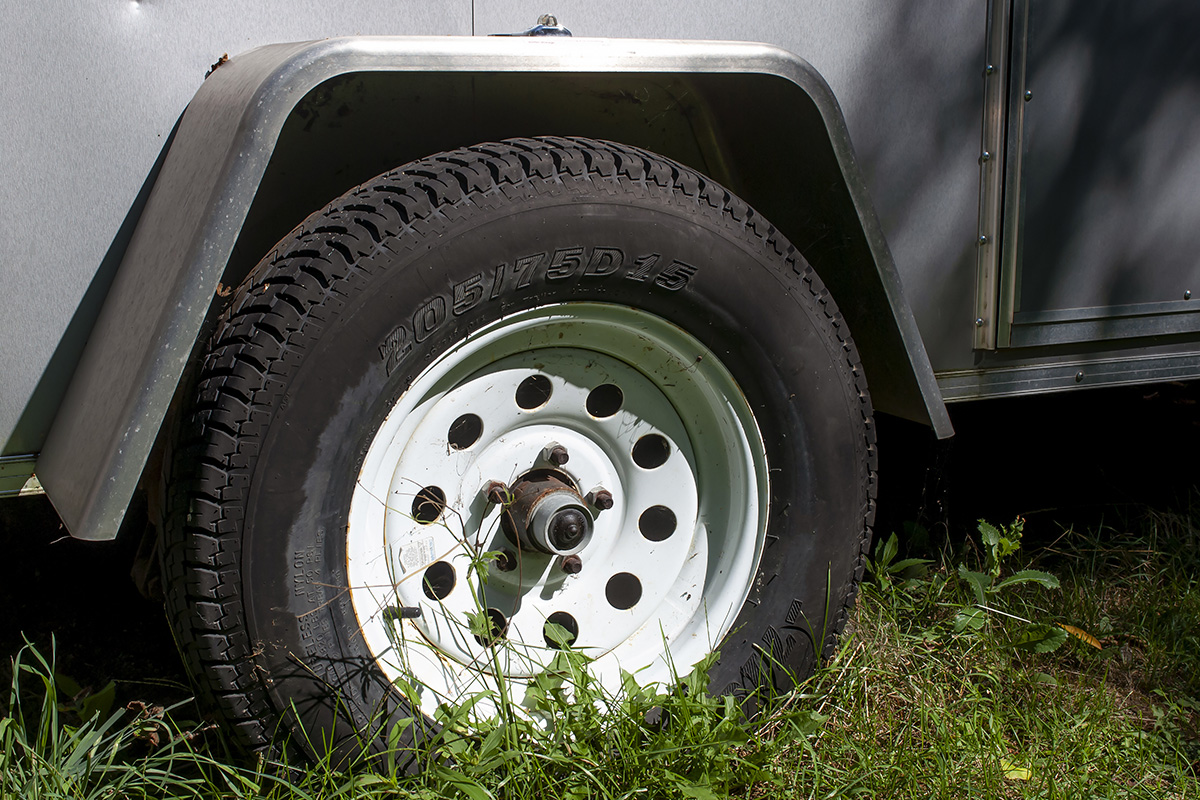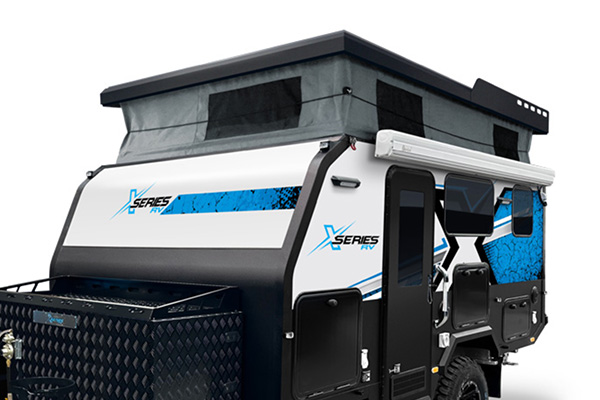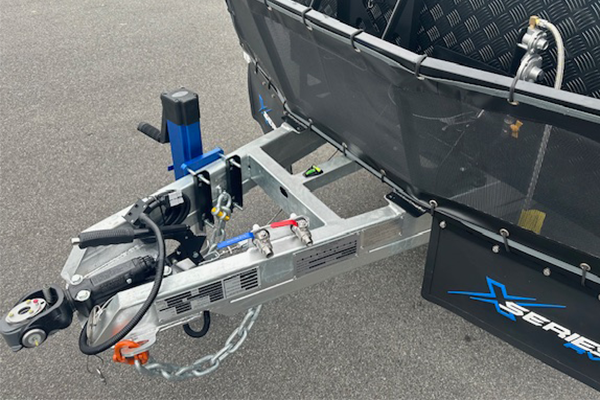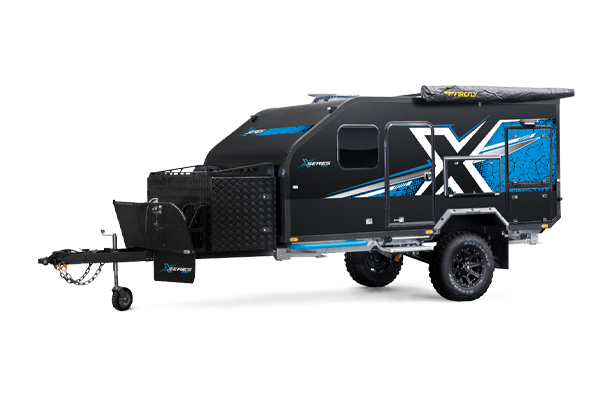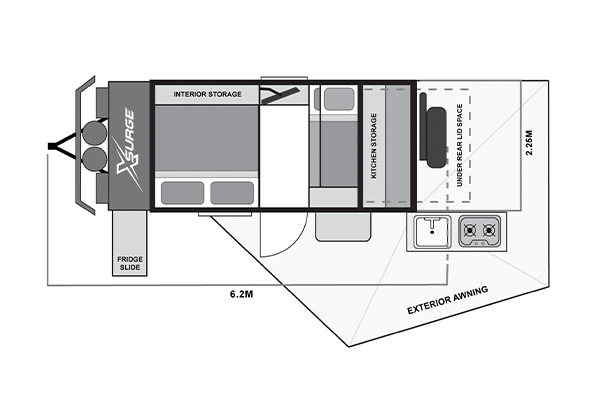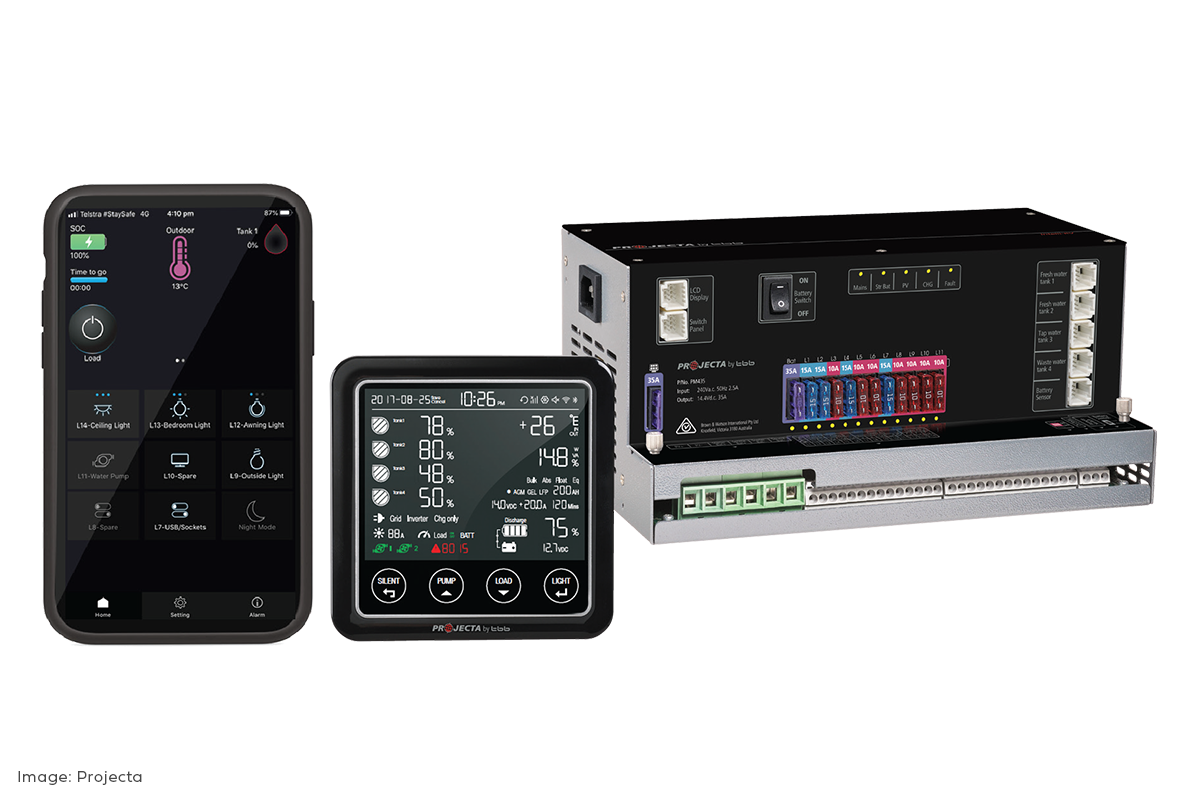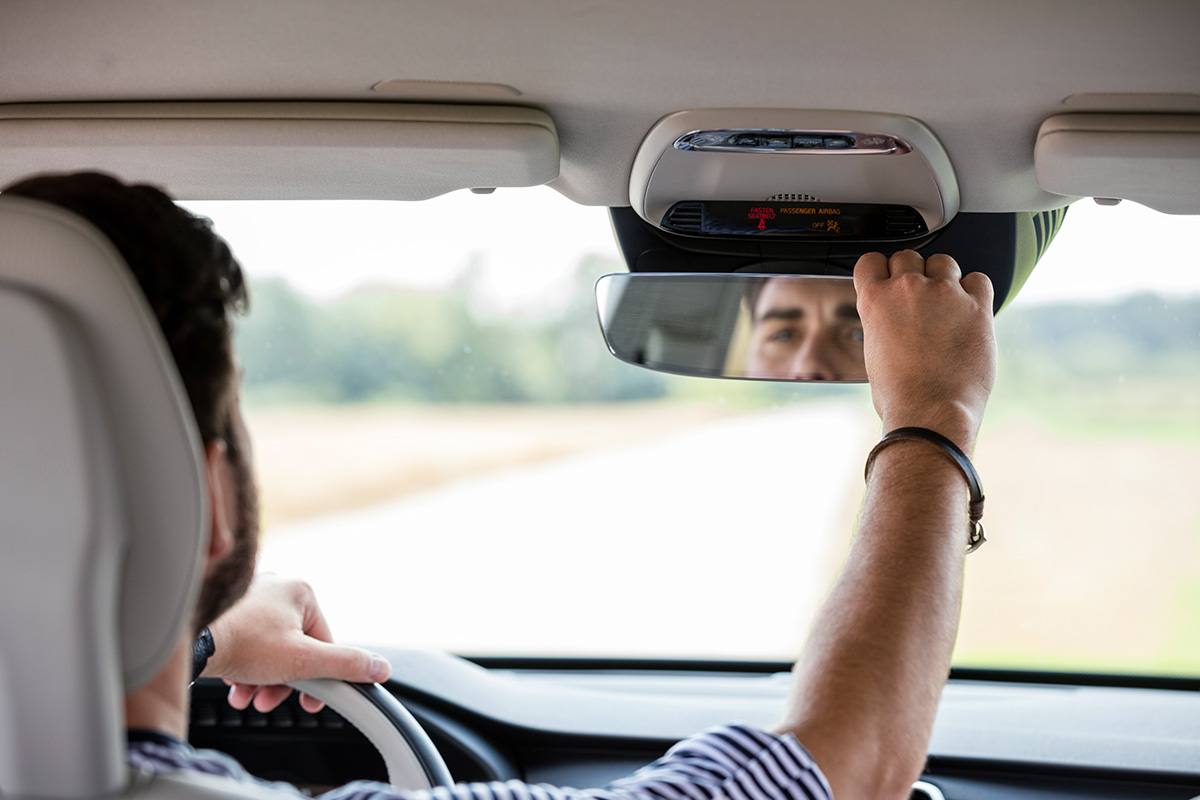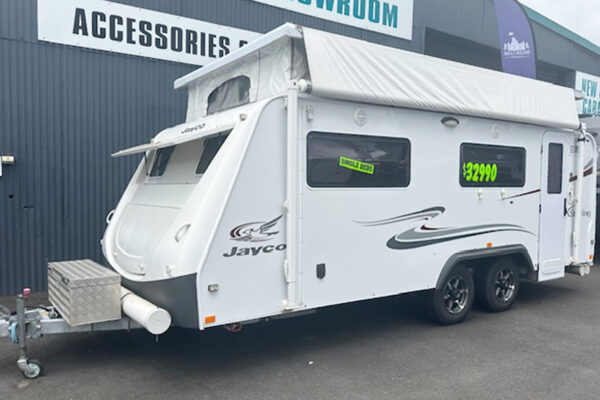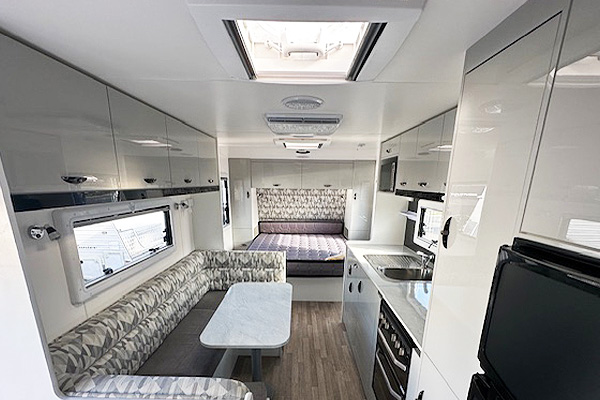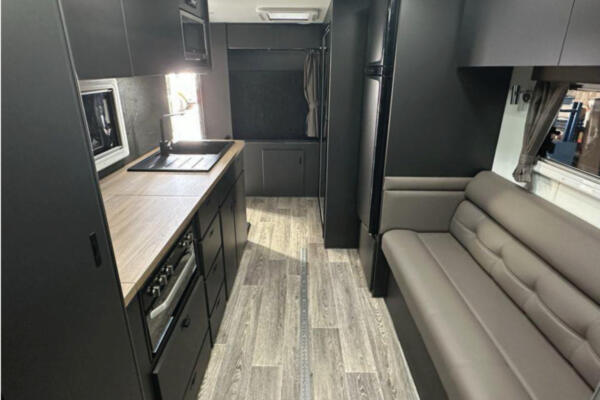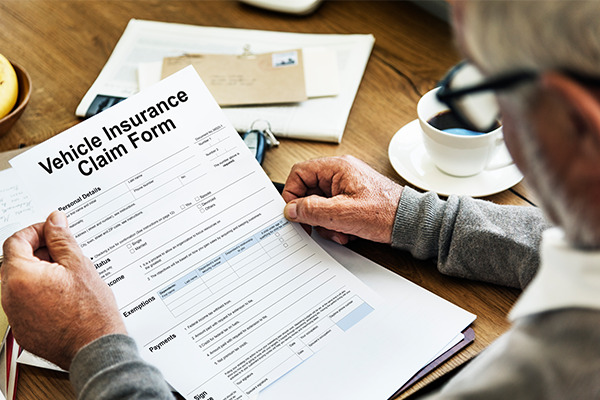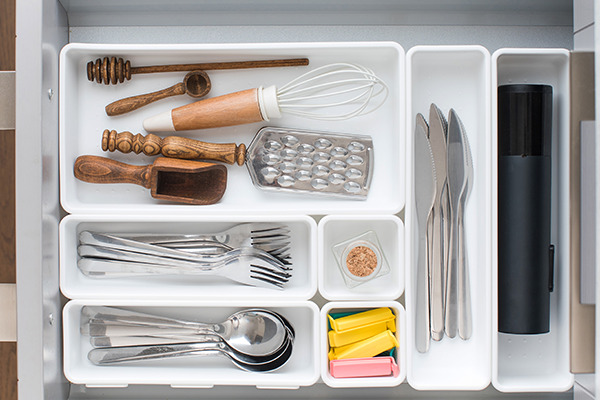Keep up to date with all things caravanning

Complete Guide of Caravan Tyre Pressure
July 17, 2024
Having the correct caravan tyre pressure is vital for the safety and performance of a caravan. Tyres are the contact between the caravan and the road and must be properly inflated to ensure optimal performance. This means regular checking is a must. Our guide explains what caravan tyre pressure is, why it is important, how to test it, how to calculate what it needs to be, and how often tyre pressure needs to be tested.
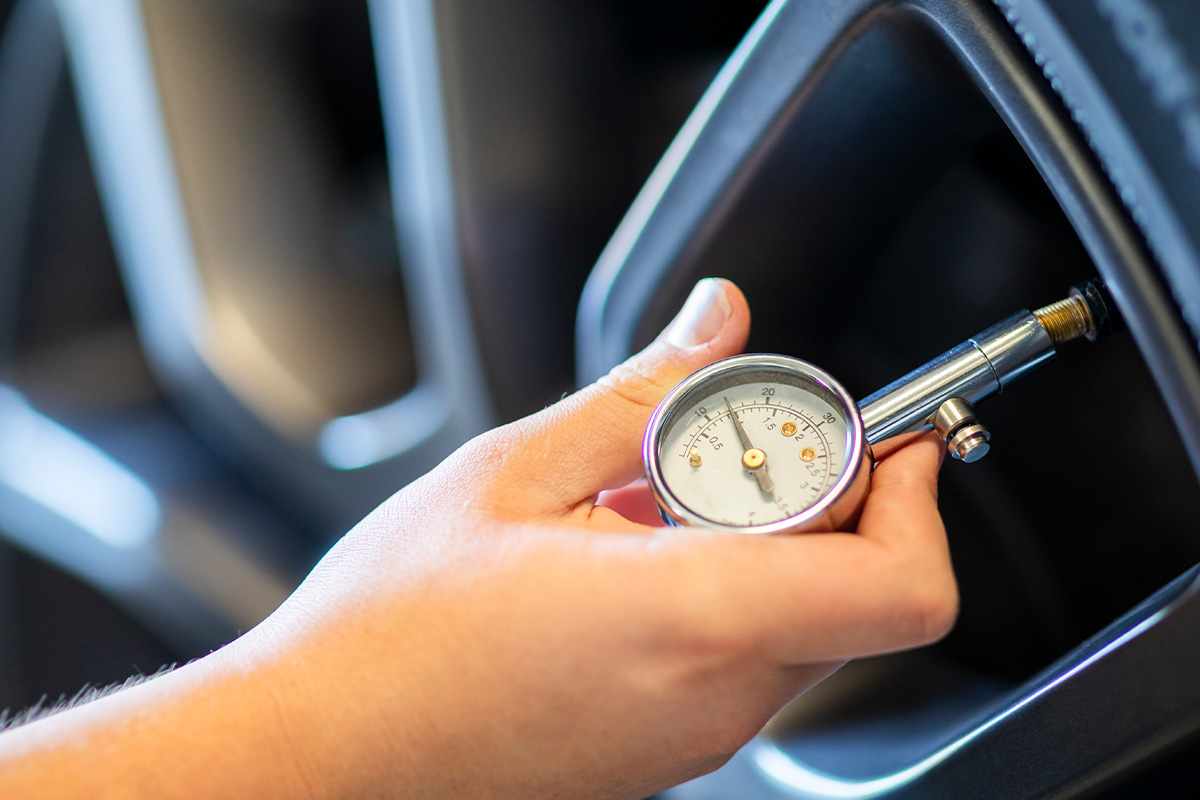
What is Caravan Tyre Pressure?
Caravan tyre pressure is the measurement of how much air is in a tyre. The air in the tyre is how much it is ‘inflated’ and ‘pressure’ is the force that is put on the defined area. Tyre pressure is usually measured in PSI which means pound force per square inch. It is the pressure that results when a 1 pound force is applied to a unit area of 1 square inch. You may also see a measurement called kPa (kilopascal) which is the metric version of PSI. 1 kPa is the pressure exerted by a 10 gram mass resting on a 1 cm 2 area. Although Australia uses the metric system, the imperial version PSI is more commonly used.
The Importance of Correct Caravan Tyre Pressure
Caravan tyres are one of the most important parts of a van as the only connection between it and the ground. Think of tyres as the foundation for safe travels. As caravans are responsible for carrying heavy loads, it is critical the tyres have the correct pressure to maintain the weight through each tyre. Having the correct pressure will help with load distribution and towing.
Incorrect tyre pressure means the tyres are overinflated or underinflated, resulting in rapid deflation and faster tread wear. This will impact everything from vehicle handling and comfort, to tyre lifespan, fuel efficiency, potential blowouts and increased risk of accidents. Caravan tyre pressure that is too high or low can result in an unstable van and higher risk of punctures. This will cause the caravan to start swaying and make it hard to control.
Overinflated tyres round out the tread section and cause the centre to wear down faster than the outer edges. The tread will be uneven and the tyre will have less contact with the road which may affect braking ability. Less tread also means less traction and potential accidents. Overinflated tyres also need to be replaced more as they wear out quickly.
Underinflated tyres are a significant factor when it comes to tyre failure. Unlike overinflated tyres, these usually wear quicker on the edges, leaving only a small amount of tread in the centre. The low pressure in the tyre means more of the wheel touches the road, creating friction that leads to overheating. Overheated tyres cause damage that can often lead to blowouts. At the very least, fuel consumption will increase, tread will wear out faster, and it will cost more for replacement tyres.
How to Calculate the Correct Caravan Tyre Pressure
To find the correct tyre pressure for your caravan, you can always look in the handbook or the placard on the caravan. Caravan handbooks usually state the tyre pressure for the original tyres and weight. A placard is usually incorporated within the van’s compliance plate and displays the recommended tyre pressure. If the original tyres have been replaced and the weight of the caravan has changed, it is important to know how to calculate the tyre pressure from the markings on the tyres fitted to your caravan.
Caravan tyre pressure is calculated using these measurements – your max tyre pressure (cold), max tyre load rating (in kg), caravan’s GTM (Gross Trailer Mass) and the number of wheels on your caravan (2 for a single axle, 4 for a dual axle). Follow these steps to calculate tyre pressure for your caravan.
- Find max tyre pressure: If the caravan still has the original tyres, you can use the placard to determine the maximum tyre pressure. However, if it has been changed, it is important to look at the new tyres for the details. These can be found on the side wall of the tyre, and is the maximum amount of pressure the tyre can withstand. The maximum tyre pressure will usually be a measurement in PSI and kPa in small print near the tire’s bead. This measurement is provided by the manufacturer, but other factors must be taken into account to determine your caravan’s correct tyre pressure.
- Find the tyre load index: The tyre load index can be found on the side wall of the tyre. It is a series of numbers that explain the tyre width, height, construction, and load rating. A typical code might be something like 207 / 69 R 17 94 J. The first part of the number is the tyre width (207 mm wide). The second part is the aspect ratio which is the tyre wall height as compared to the width (the tyre wall height is 69% of the tyre width). ‘R’ stands for the construction of the tyre like Radial. The number 17 is the rim diameter in inches, and 94 refers to load rating and is important to note down as it will help find the maximum load rating.
- Find max tyre load rating: The max tyre load rating can be found on the side wall of the tyre, and is a number that tells you what the heaviest load is that the tyres can manage when operating at maximum speed. The higher the load rating, the stronger the tyre. The load index will be a number between 60 and 130 which correlates to the maximum weight allowed per tyre from 250 kg to 1,900 kg. If your tyre load index says 99, then each of your tyres can carry up to 775 kg of weight each. So if you had a single axle caravan, the two tyres could carry a maximum load of 1550kg. As the tyre industry recommends the tyre load should never exceed 90% of the tyre load rating, the safest tyre load would be 1395 kg.
- Calculate caravan GTM weight: To understand if your tyre load rating is enough to carry the weight of a fully loaded caravan, we need to calculate the GTM (Gross Trailer Mass) weight. The GTM weight is the combination of everything that makes up the weight of the fully loaded caravan, including accessories, luggage, gas and water when it is coupled to the tow vehicle. The maximum GTM weight can be found on the caravan’s compliance plate. You can also work this out by subtracting the ATM (Aggregate Trailer Mass which is the maximum allowable weight of a fully loaded caravan when it is unhitched from the tow vehicle) from the GTM.
- Number of wheels: Caravans can either have a single axle or dual axle. The former has only two tyres and the latter has four. Tyre pressure calculations must take into account the number of wheels when deciding on tyre pressure.
- Calculate actual load: To calculate the actual weight the caravan will be putting on each tyre, take the caravan’s GTM and divide it by the number of tyres.
- Calculate caravan tyre pressure: With all the measurements above, we can now use a simple calculation to work out the correct caravan tyre pressure.
- Divide max tyre pressure by tyre load rating for a number
- Multiply that number by actual load on each tyre
- The figure you arrive at is the correct inflation pressure for each tyre.
- Eg. 51 (max tyre pressure) divided by 775 (tyre load rating) x 700 (actual load on each tyre) = 46.06
Therefore the correct tyre pressure for each tyre is 46 PSI.
Caravan Tyre Pressure for Different Terrains
While this calculator is an excellent tool for determining correct tyre pressure for caravan tyres, it is specific to tyres on the road. However, it is important to note that different terrains require different tyre pressure.
Sand: Tyre pressure on sandy terrain needs to be lowered to approximately 18 to 26 PSI. The lower tyre pressure increases the surface area of the tyre and spreads the weight of the vehicle, increasing traction and preventing the caravan tyres from digging into the sand.
Gravel, rocks and corrugated: About 28 PSI is good for gravel, rocks or corrugated roads, depending on how rough the road is, the caravan speed and weight. The higher the speed, the more heat the tyre generates which can be dangerous on gravel or unstable surfaces. Reducing the PSI will help the tyre footprint spread further over rocky roads.
Dirt: Caravan tyre pressure should be dropped to around 30 PSI on dirt roads to stop the tyres from overheating. Reducing the pressure also provides protection against damage from the occasional rock as it is not as easy to penetrate as when tyres are fully inflated.
How to Check Caravan Tyre Pressure
Check the caravan tyre pressure using a gauge. The best way to do that is by using the PSI rule and taking into account if the tyres are hot or cold. Follow these steps to check caravan tyre pressure.
- Buy a caravan tyre pressure gauge: You can purchase tyre pressure gauges online, in stores or at some caravan manufacturers. It is important to invest in a good quality digital gauge that will give you accurate readings whenever you require.
- Tyre Pressure monitors: You can purchase a tyre pressure monitor that will provide live readings of your tyre pressures & temperature. These units have a screen in the car that reads via bluetooth from the wheels. Hot tyres can also indicate bearing failure or a handbrake being left on. These systems will alarm for low or high tyre pressure along with alarms for overheating.
- Check tyre pressure when cold: Make sure the caravan has not been towed for at least 2 hours before checking the tyre pressure. Tyre pressure must be checked when it is cold as maximum tyre pressure is calculated taking into account cold tyres. Inflate tyres to the correct pressure.
- Check tyre pressure when hot: Drive for a minimum of 30 minutes for the tyres to heat up and then stop and check pressure again. The tyre pressure should have increased by 4 PSI for the starting (cold) pressure to be correct. If the PSI increases above 4 PSI the starting pressure is too high.
- Inflate or deflate as needed: If the tyre pressure recorded in hot check is too low or high, the tyres will need to be deflated or inflated accordingly.
Understanding caravan tyre pressure is crucial for caravan owners and a fundamental aspect of caravan safety. To help you enjoy life on the road and many more caravan adventures to come, we have broken down everything you need to know about caravan tyre pressure. Our detailed guide explains what caravan tyre pressure is, how to calculate it and how to check your own caravan tyre pressure. The team at Canterbury Caravans are experts in all aspects of caravanning, so call them today to find out more.
